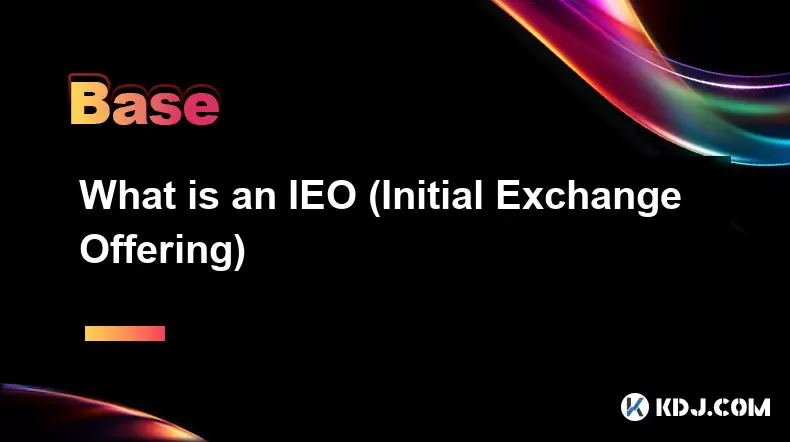-
 Bitcoin
Bitcoin $121,713.8152
3.06% -
 Ethereum
Ethereum $3,041.6437
2.42% -
 XRP
XRP $2.9499
5.12% -
 Tether USDt
Tether USDt $1.0000
-0.02% -
 BNB
BNB $704.1034
1.75% -
 Solana
Solana $166.7523
2.91% -
 USDC
USDC $0.9999
0.00% -
 Dogecoin
Dogecoin $0.2052
2.90% -
 TRON
TRON $0.3011
-0.47% -
 Cardano
Cardano $0.7461
1.42% -
 Hyperliquid
Hyperliquid $48.3650
1.12% -
 Stellar
Stellar $0.4548
3.52% -
 Sui
Sui $3.9527
14.50% -
 Chainlink
Chainlink $16.3300
5.87% -
 Bitcoin Cash
Bitcoin Cash $511.8016
1.25% -
 Hedera
Hedera $0.2395
1.40% -
 Avalanche
Avalanche $21.6526
2.06% -
 UNUS SED LEO
UNUS SED LEO $9.0073
-0.23% -
 Shiba Inu
Shiba Inu $0.0...01369
2.61% -
 Toncoin
Toncoin $3.0335
0.66% -
 Litecoin
Litecoin $96.6206
1.72% -
 Monero
Monero $355.1673
5.35% -
 Polkadot
Polkadot $4.0839
2.47% -
 Uniswap
Uniswap $9.3282
9.72% -
 Dai
Dai $0.9997
-0.01% -
 Ethena USDe
Ethena USDe $1.0004
-0.04% -
 Pepe
Pepe $0.0...01248
1.07% -
 Bitget Token
Bitget Token $4.4642
2.68% -
 Aave
Aave $325.0626
6.81% -
 Bittensor
Bittensor $418.1482
6.22%
What is an IEO (Initial Exchange Offering)
An IEO is a token sale hosted on a cryptocurrency exchange, offering investors added security through KYC checks and immediate trading access.
Jul 13, 2025 at 08:50 pm

Understanding the Concept of IEO
An Initial Exchange Offering (IEO) is a fundraising mechanism used by blockchain-based startups to raise capital through cryptocurrency exchanges. Unlike traditional crowdfunding or even Initial Coin Offerings (ICOs), an IEO is conducted directly on a cryptocurrency exchange platform, which acts as an intermediary between the project team and investors. This structure provides a layer of trust and credibility because the exchange typically performs due diligence before listing the token sale.
One of the key features of an IEO is that the exchange handles the token sale process, including KYC/AML checks, fund collection, and token distribution. Investors participate by purchasing the tokens using cryptocurrencies like Bitcoin or Ethereum, and the newly issued tokens are automatically credited to their exchange wallets once the sale concludes.
Differences Between IEO and ICO
The primary distinction between an IEO and an ICO lies in the platform where the token sale occurs. In an ICO, projects launch their own token sales independently, often through their websites, requiring users to send funds directly to a smart contract. However, this method has been associated with scams and fraudulent activities.
In contrast, an IEO takes place on a trusted and regulated exchange, reducing the risk for investors. Since the exchange vets the project beforehand, it adds a level of assurance regarding the legitimacy of the offering. Additionally, the exchange manages all technical aspects of the sale, including user verification and token allocation, making the process more streamlined and secure for participants.
How Does an IEO Work?
When a project decides to conduct an IEO, it must first apply to a cryptocurrency exchange willing to host the token sale. The exchange evaluates the project's whitepaper, team credentials, business model, and market potential. If approved, the exchange collaborates with the project to set the terms of the sale, such as token price, supply cap, and sale duration.
During the IEO period, investors need to have accounts on the hosting exchange and complete necessary KYC/AML procedures. Once the sale begins, they can purchase the new tokens using supported cryptocurrencies. After the sale ends, the tokens are distributed to investor wallets, and the exchange may list the token for trading shortly thereafter.
- Project submits application to an exchange.
- Exchange conducts due diligence and approves the project.
- Token sale details are announced to the public.
- Investors register and complete identity verification.
- Token sale commences and investors buy tokens.
- Tokens are distributed post-sale and listed for trading.
Advantages of Participating in an IEO
Participating in an IEO offers several benefits for both investors and project teams. For investors, the involvement of a reputable exchange reduces the risk of scams, as exchanges perform background checks on projects before approving them. Moreover, since the tokens are often listed immediately after the sale, investors can start trading right away, potentially realizing quick profits.
For startups, launching an IEO means gaining access to a large pool of existing users on the exchange platform. This increases visibility and investor interest without the need for extensive marketing campaigns. Additionally, exchanges provide technical support and infrastructure, allowing project teams to focus on development rather than logistics.
Risks and Considerations
Despite the advantages, there are still risks involved in participating in an IEO. Although exchanges conduct due diligence, it does not guarantee success or long-term viability of the project. Some projects may fail to deliver on their promises, leading to loss of investment.
Another important factor is the volatility of cryptocurrency markets. Even if a project is legitimate, market conditions can cause significant fluctuations in token value shortly after listing. Investors should also be aware of regulatory changes, as governments continue to monitor and adjust policies around digital asset offerings.
Additionally, participation in IEOs often requires holding the native token of the exchange. For example, Binance Launchpad requires users to hold BNB to participate in some IEOs. This introduces another layer of dependency and potential cost for investors.
Frequently Asked Questions (FAQs)
Q: Do I need to use a specific exchange to participate in an IEO?
Yes, you must use the exchange that is hosting the IEO. Each IEO is exclusive to the platform organizing it, and you must create an account, complete KYC, and meet any eligibility requirements set by the exchange.
Q: Are IEOs available to everyone globally?
Not always. Some IEOs restrict participation based on geographic location due to regulatory constraints. It’s essential to check the terms and conditions provided by the exchange to determine if you are eligible to join.
Q: Can I sell my IEO tokens immediately after receiving them?
Typically, yes. Most exchanges list the token shortly after the IEO concludes, allowing immediate trading. However, some projects may impose a short lock-up period before trading begins, so it's crucial to review the specific IEO's rules.
Q: What happens if an IEO fails to reach its funding goal?
If the IEO does not meet the minimum funding threshold set by the project, the funds raised are usually returned to investors. The exact refund policy depends on the exchange and the project's terms, so reading the documentation carefully is important.
Disclaimer:info@kdj.com
The information provided is not trading advice. kdj.com does not assume any responsibility for any investments made based on the information provided in this article. Cryptocurrencies are highly volatile and it is highly recommended that you invest with caution after thorough research!
If you believe that the content used on this website infringes your copyright, please contact us immediately (info@kdj.com) and we will delete it promptly.
- Trump, Bitcoin, and Reserves: A New Era for Crypto?
- 2025-07-14 22:50:11
- Bitcoin's Wild Ride: All-Time Highs and Crypto Week Mania!
- 2025-07-14 23:10:12
- Bitcoin's Wild Ride: Coin Surge and Fintech Experts Weigh In
- 2025-07-14 23:10:12
- Bitcoin's Ascent: From Crypto to Valuable Asset Dominating Global Finance
- 2025-07-14 22:30:11
- Bitcoin Price Prediction & AI Tokens: Riding the Crypto Wave
- 2025-07-14 22:50:11
- Strategy Scoops Big Bitcoin Paper Gains: A New York Minute
- 2025-07-14 22:55:12
Related knowledge

What is the Bitcoin dominance index
Jul 12,2025 at 10:35pm
Understanding the Bitcoin Dominance IndexThe Bitcoin Dominance Index, often abbreviated as BTC.D, is a metric used to measure Bitcoin's market capital...

What is the Bitcoin dominance index
Jul 11,2025 at 04:29am
What is the Bitcoin Dominance Index?The Bitcoin Dominance Index is a metric used to gauge Bitcoin's market capitalization relative to the total market...

Can crypto be a hedge against inflation
Jul 14,2025 at 12:21am
Understanding the Concept of Hedging Against InflationInflation refers to the general increase in prices and fall in the purchasing value of money ove...

Can crypto be a hedge against inflation
Jul 12,2025 at 12:07pm
Understanding the Role of Blockchain in Decentralized Finance (DeFi)Blockchain technology serves as the backbone of decentralized finance, offering a ...

What are account abstraction wallets
Jul 13,2025 at 01:43am
Understanding the Concept of Account AbstractionAccount abstraction is a term frequently used in the Ethereum ecosystem, particularly within discussio...

What does "gas limit" vs "gas price" mean
Jul 13,2025 at 04:00am
Understanding the Basics of Gas in Blockchain TransactionsIn the Ethereum and other EVM-compatible blockchains, every transaction requires computation...

What is the Bitcoin dominance index
Jul 12,2025 at 10:35pm
Understanding the Bitcoin Dominance IndexThe Bitcoin Dominance Index, often abbreviated as BTC.D, is a metric used to measure Bitcoin's market capital...

What is the Bitcoin dominance index
Jul 11,2025 at 04:29am
What is the Bitcoin Dominance Index?The Bitcoin Dominance Index is a metric used to gauge Bitcoin's market capitalization relative to the total market...

Can crypto be a hedge against inflation
Jul 14,2025 at 12:21am
Understanding the Concept of Hedging Against InflationInflation refers to the general increase in prices and fall in the purchasing value of money ove...

Can crypto be a hedge against inflation
Jul 12,2025 at 12:07pm
Understanding the Role of Blockchain in Decentralized Finance (DeFi)Blockchain technology serves as the backbone of decentralized finance, offering a ...

What are account abstraction wallets
Jul 13,2025 at 01:43am
Understanding the Concept of Account AbstractionAccount abstraction is a term frequently used in the Ethereum ecosystem, particularly within discussio...

What does "gas limit" vs "gas price" mean
Jul 13,2025 at 04:00am
Understanding the Basics of Gas in Blockchain TransactionsIn the Ethereum and other EVM-compatible blockchains, every transaction requires computation...
See all articles

























































































